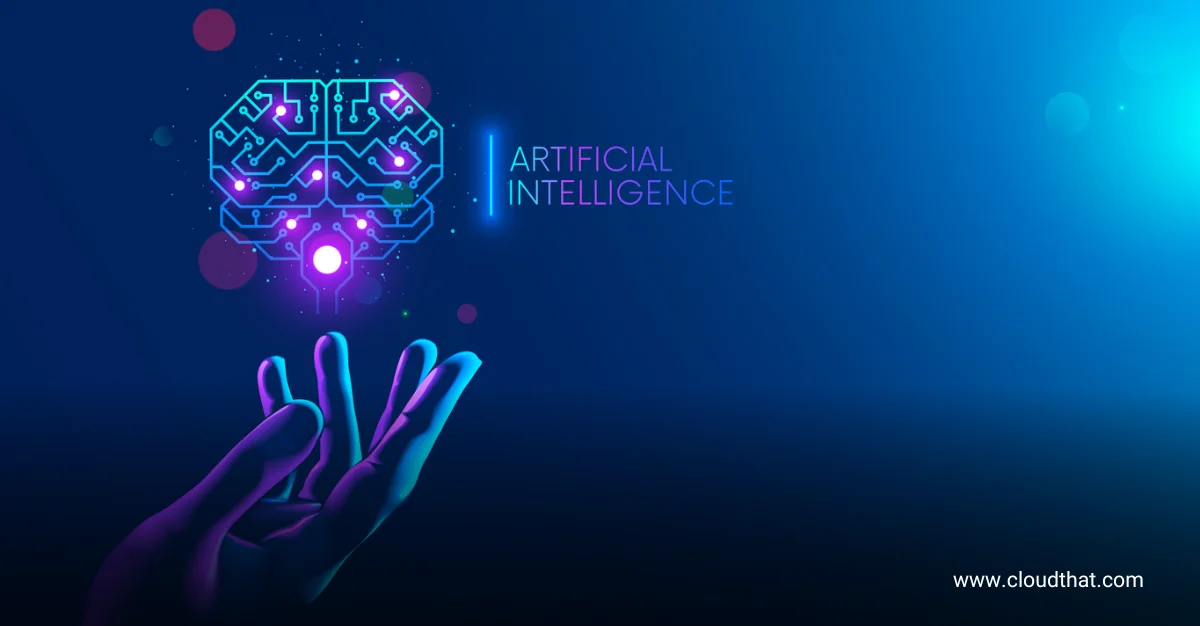|
Voiced by Amazon Polly |
Introduction: The Evolution of Software Delivery
Nowadays where speed and reliability are vital to software success, Continuous Integration and Continuous Delivery/Deployment (CI/CD) has become the backbone of modern DevOps. Organizations today aim to deliver high-quality applications faster and more efficiently, and CI/CD helps achieve that by automating the software development lifecycle.
When combined with cloud computing, CI/CD becomes even more powerful. Cloud platforms offer on-demand infrastructure, scalability, and global availability that make implementing CI/CD pipelines simpler and more robust.
This blog dives deep into the world of CI/CD in the cloud, exploring its meaning, benefits, tools, challenges, and best practices to help you streamline your software delivery process.
Transform Your Career with AWS Certifications
- Advanced Skills
- AWS Official Curriculum
- 10+ Hand-on Labs
What is CI/CD?
Continuous Integration (CI) is a practice where developers frequently integrate code into a shared repository, triggering automated builds and tests to catch errors early.
Continuous Delivery (CD) takes CI a step further by ensuring that integrated code is automatically prepared for production deployment after passing all tests.
Continuous Deployment goes one step beyond continuous delivery by automatically deploying every change that passes all stages of the pipeline to production, without human intervention.
Together, CI/CD minimizes manual intervention, improves code quality, reduces bugs in production, and allows teams to release features quickly and reliably.
CI/CD Pipeline Architecture

Why Move CI/CD to the Cloud?
While CI/CD can be implemented on-premises, moving to the cloud unlocks a new level of agility, flexibility, and scalability.
- Scalability
Cloud platforms offer elastic compute resources. You can automatically scale build and test servers up or down based on traffic demand, ensuring efficient use of resources.
- Cost-Efficiency
You only pay for what you use. There’s no need to invest in expensive hardware or maintain infrastructure, reducing both capital and operational expenditures.
- Speed & Agility
The cloud allows you to set up, modify, and deploy pipelines quickly. This speed facilitates shorter development cycles and faster time-to-market.
- Remote Collaboration
Cloud-based CI/CD pipelines are accessible from anywhere, enabling geographically dispersed teams to collaborate effectively and in real time.
- Integration with Cloud Services
Cloud CI/CD tools seamlessly integrate with other cloud services such as storage, databases, monitoring, and alerting systems.
Popular CI/CD Tools in the Cloud
Numerous tools exist to implement CI/CD pipelines in the cloud. Here are some of the most popular and widely used:
- GitHub Actions
- Native CI/CD platform integrated directly with GitHub repositories.
- It allows you to automate your software workflows—such as building, testing, and deploying code—whenever certain events occur in your GitHub repository
- Great for open-source and internal projects.
- GitLab CI/CD
- A built-in feature of GitLab.
- Offers comprehensive DevOps lifecycle tools.
- Supports Kubernetes deployments, auto DevOps, and more.
- Jenkins
- Open-source automation server.
- Highly customizable with hundreds of plugins.
- Can be deployed on any cloud platform like AWS, Azure, or GCP.
- AWS CodePipeline
- Fully managed CI/CD service.
- Integrates with AWS CodeBuild, CodeDeploy, Lambda, and ECS.
- Ideal for AWS-centric applications.
- Azure DevOps
- End-to-end suite of tools from Microsoft.
- Includes Azure Pipelines for CI/CD.
- Supports multi-cloud and hybrid environments.
- Google Cloud Build
- CI/CD service for building and deploying on GCP.
- Deep integration with Google Kubernetes Engine (GKE).
- Supports Docker and serverless environments.
Benefits of Cloud CI/CD Pipelines
- Faster Development Cycles
CI/CD automates testing and deployment, shortening development iterations and enabling faster feature releases.
- Improved Software Quality
Automated testing identifies issues early, improving code reliability and reducing defects in production.
- Enhanced Security
Cloud CI/CD tools come with built-in security features such as encrypted storage, secret management, and compliance monitoring.
- High Availability and Disaster Recovery
Cloud providers ensure redundancy, failover, and backup mechanisms, minimizing downtime and data loss.
- Automation and Innovation
Developers spend less time on manual tasks and more on innovation, improving team productivity and software quality.
Best Practices for CI/CD in the Cloud
- Keep Pipelines Fast and Modular
- Design pipelines to fail fast by running critical tests early.
- Break down monolithic pipelines into microservices or stages to simplify maintenance.
- Use Infrastructure as Code (IaC)
- Use tools like Terraform, AWS CloudFormation.
- Define, provision, and manage infrastructure programmatically and reproducibly.
- Secure Secrets and Access
- Store API keys and credentials in secret managers (e.g., AWS Secrets Manager, Azure Key Vault).
- Implement role-based access control (RBAC) to enforce least privilege.
- Automate Rollbacks and Monitoring
- Implement blue-green or canary deployments to reduce risk.
- Monitor system health with tools like Prometheus, Datadog, or CloudWatch.
- Implement Quality Gates
- Integrate static code analysis, linting, and vulnerability scanning.
- Set thresholds for code coverage, test pass rates, and security checks.
Real-World Example: CI/CD on AWS
Let’s look at how a typical CI/CD workflow might be implemented using AWS:
- AWS CodeBuild – Code is built and unit tested.
- AWS CodeDeploy – Application is deployed to EC2, ECS, or Lambda.
- AWS CodePipeline – Orchestrates the entire CI/CD process.
- Amazon CloudWatch – Monitors logs, metrics, and performance at each stage of pipeline.

This integrated environment ensures code moves seamlessly from code repository to production, with full traceability and rollback support.
Challenges and Mitigations
| Challenge | Mitigation |
| Build bottlenecks | Use parallelism, caching, and lightweight builds |
| Environment inconsistencies | Use containerization and IaC |
| Secret management | Store secrets securely in a cloud-based vault |
| Debugging failed builds | Use detailed logging and enable verbose output |
Conclusion: Building for the Future
CI/CD in the cloud is more than just a convenience—it’s a critical enabler for modern software development. By automating and streamlining the process from code repository to deployment, cloud-based CI/CD enhances agility, quality, and efficiency.
Whether you’re a startup or an enterprise, adopting CI/CD in the cloud can dramatically improve your ability to innovate, respond to user needs, and scale your services reliably.
As cloud platforms evolve and DevOps matures, CI/CD will continue to play a central role in delivering value faster, more securely, and at scale.
Earn Multiple AWS Certifications for the Price of Two
- AWS Authorized Instructor led Sessions
- AWS Official Curriculum
About CloudThat
CloudThat is an award-winning company and the first in India to offer cloud training and consulting services worldwide. As a Microsoft Solutions Partner, AWS Advanced Tier Training Partner, and Google Cloud Platform Partner, CloudThat has empowered over 850,000 professionals through 600+ cloud certifications winning global recognition for its training excellence including 20 MCT Trainers in Microsoft’s Global Top 100 and an impressive 12 awards in the last 8 years. CloudThat specializes in Cloud Migration, Data Platforms, DevOps, IoT, and cutting-edge technologies like Gen AI & AI/ML. It has delivered over 500 consulting projects for 250+ organizations in 30+ countries as it continues to empower professionals and enterprises to thrive in the digital-first world.

WRITTEN BY Mahek Tamboli
Mahek is a Senior Subject Matter Expert at CloudThat, specializing in AWS Architecting. With 13 years of experience in IT and education industry, she has trained over 2000 professionals/students to upskill in hardware, network, MCSA, RHCSA and multi cloud. She is an authorized trainer for AWS and GCP. Known for simplifying complex concepts and delivering interactive and hands-on sessions, she brings deep technical knowledge and practical application into every learning experience. Mahek passion for continuous learning reflects in her unique approach to learning and development.


 Login
Login


 June 18, 2025
June 18, 2025 PREV
PREV










Comments